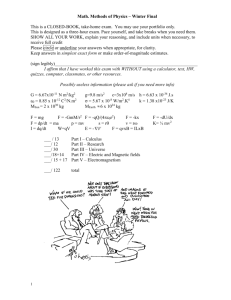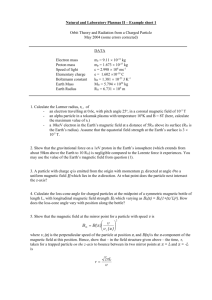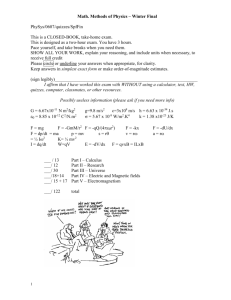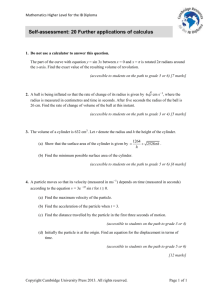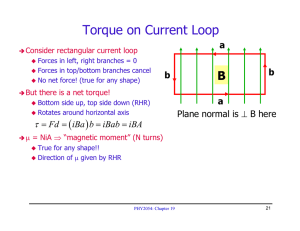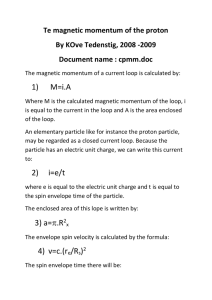Measurement of particle momentum exercise
advertisement
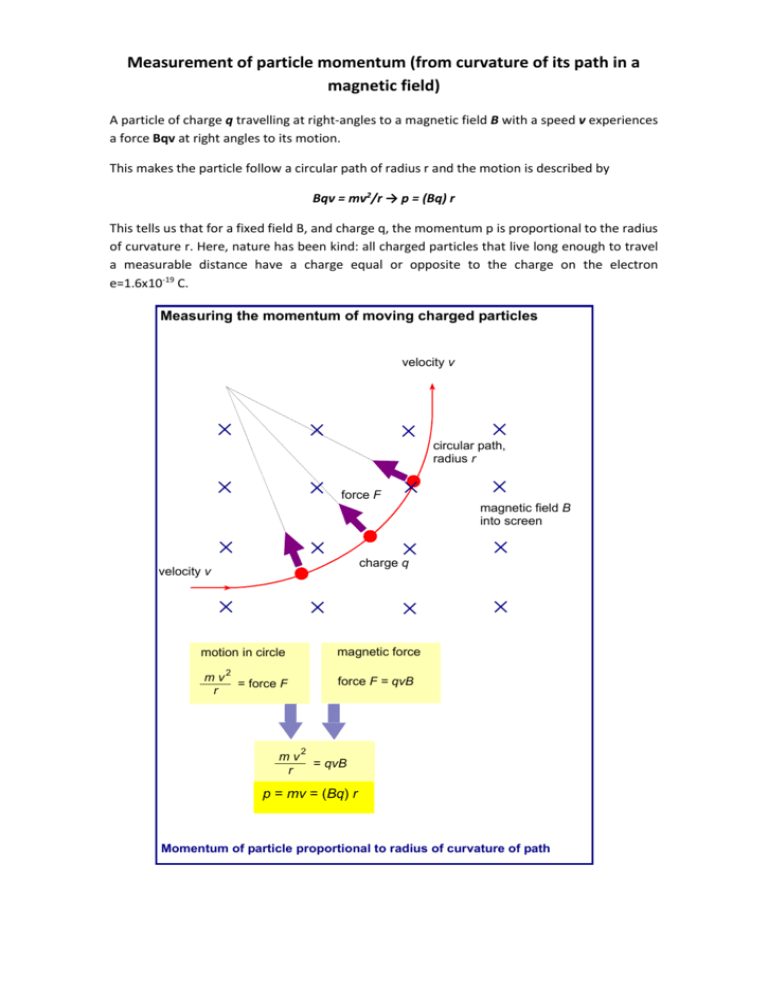
Measurement of particle momentum (from curvature of its path in a magnetic field) A particle of charge q travelling at right‐angles to a magnetic field B with a speed v experiences a force Bqv at right angles to its motion. This makes the particle follow a circular path of radius r and the motion is described by Bqv = mv2/r → p = (Bq) r This tells us that for a fixed field B, and charge q, the momentum p is proportional to the radius of curvature r. Here, nature has been kind: all charged particles that live long enough to travel a measurable distance have a charge equal or opposite to the charge on the electron e=1.6x10‐19 C. Measuring the momentum of moving charged particles velocity v force F circular path, radius r magnetic field B into screen charge q velocity v motion in circle magnetic force m v2 = force F r force F = qvB m v2 = qvB r p= p =mv mv==(Bq) qrB r at relativistic speed p = qrB is still true but p > mv Momentum of particle proportional to radius of curvature of path Exercise 1 The radius of curvature of the curved sections of the LHC is 2804 m. Show that, whit a magnetic field of 8.33 T, the momentum of the circling protons is 7000 Gev/c (or 7 Tev/c). [Note: 1 eV= 1.6022 x 10-19J] Exercise 2 Find the ratio of the proton velocity to the velocity of light in a vacuum.

